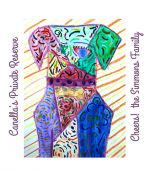
 OF WINE AND OAK
OF WINE AND OAK
The iconic oak barrel. And all its associations to the world of wine.
How did it come to be so? Why is it used for wine? Was it always used? When did it come about? Who started it?
As Mr.Peabody might have said, “Set the Wayback Machine to the ancient Egyptians, Sherman, and let’s take a look see.”
A DIFFICULT BEGINNING
Originally, the ancient Egyptians stored and transported wine in clay amphorae. Clay was airtight when sealed properly so it was the vessel of choice when you needed to move wine around to keep everyone happy. The exception to using this container was the palm wood barrel made by some other civilizations in the Mesopotamian region. They weighed a lot less than clay but palm wood was very difficult to maneuver and bend into the proper shape so it was not a practical alternative and wasn’t generally adopted.
So when the Greeks and then the Romans came along they continued to use clay amphorae. Then, when the Romans were taking over the known world, it got harder and harder to get wine to their armies in the north. The amphorae were heavy and prone to breakage. But wine was considered essential for the troops for several reasons. First, it was safer to drink than water. Second, it provided needed calories for hard fighting men. And, last, it made them feel good! So, what to do? Keep lugging the amphorae around.
Now the Romans were aware of those palm wood barrels previously mentioned but they also found them unworkable due to cost and difficulty. It was a problem. Well, as fate would have it, the Romans encountered the Gauls. Here they found a group of people who were using wooden barrels, often made of oak, to transport beer. Aha! The problem solved! And, while other woods were used, oak came to predominate for several reasons. First, the wood was much softer to bend into a barrel shape. Second, oak trees were abundant in the forests of continental Europe. And, finally, oak, with its tight grain, offered a waterproof storage medium. The transition to wooden barrels was swift. In less than two centuries, tens of millions of amphorae were littered across the landscape.
BEYOND TRANSPORATION: AGING
After some time, the Romans (and others after them), realized that oak actually improved the wine. The barrels Imparted new pleasant qualities like making the wine softer and smoother and better tasting along with adding scents like cloves, cinnamon and allspice and vanilla. It added additional flavors like caramel, vanilla or even butter. As they continued to use oak barrels, merchants, wine producers, and armies alike found the longer the wine remained inside the barrels the more qualities from the oak would be imparted into the wine. And that’s how we started the practice of aging wine in oak.
ANY KIND OF OAK?
Back to the present! We have so much more information on the properties of oak and its relationship to wine these days. Chemical analysis has come a long way on the subject and I will touch on that later. But, now, let’s start with the actual trees. Of the 400 species of oak trees that grow around the world, three main types are used in winemaking: the American oak Quercus alba (mainly from the Midwest) and the French oaks Quercus robur and Quercus petrea (from central and eastern France). I will mention that Hungarian and Slavonian barrels also have a following with some wine makers but will stick to the American and French because they are more commonly used.
The French forests of Tronçais, Vosges, Nevers, and Limousin provide trees that are much sought after worldwide. These places have a cool dry climate where the trees grow slowly creating narrow rings of dense wood. Because the wood inside a narrow ring is more dense than inside a wide ring, flavor is extracted more gradually. Winemakers find this desirable because the oak character is usually better integrated into the wine and the overall flavor of the wine becomes more mellow. Interesting fact: the forest of Tronçais was planted in the 1600s as a source of superior ship masts for the French Navy. And, get this, an oak tree is generally harvested around 100 years old! One tree makes only two barrels at best. Need to plan ahead with those kind of numbers! This also explains part of the expense of new oak barrels.
Though American oak is not designated by the forest from which it comes, the best American oak also comes from cool places like Minnesota, Iowa, Kentucky and other places in the Midwest. But even at that, American oak still has a wider grain with lower wood tannins as compared to the French. This makes American barrels not quite as expensive as the French, but there are still many factors that influence a winemaker’s choice. They will ultimately decide what type of oak will best show off a particular wine.
HOW OAK AND WINE MARRY
Why does a winemaker choose to use oak? What does it do to wine? Oak affects wine in many ways. It imparts an additional dimension to aromas, color stability and the flavors of wine. It can be a textural and or a flavor element in winemaking, depending on whether the barrels are new or used, from French or American oak, and their size. It’s the use of new oak that most dramatically influences wine. There are flavor compounds like lactones, aldehydes and volatile phenols that leach into the wine giving it a number of characteristic aromas and flavors. It modifies the wine in two major ways. It changes the aromatics by giving it smells of vanilla, pepper and spices. It can add flavors of cedar or pine and nuts like hazelnut and and almond. And, while the first source of tannins comes from the stems seeds and skins of the grapes themselves, the second source is the oak barrel itself. Inside the barrel, controlled amounts of oxygen come into contact with the wine. This oxygen bonds with the hard grape tannins and the wine softens and becomes less astringent. It can tame a muscular grape like Cabernet Sauvignon. Depending how the barrel was “toasted” (the fire that helps bend the staves of the barrel into shape and caramelize the wood’s natural sugar, lightly, moderately or well toasted) more flavors and aromas of vanilla, toast, tobacco, coffee and caramel will emerge.
Most red wines are usually oaked. And some lighter reds like Pinot Noir that is naturally low in tannins, can acquire the tannic structure it lacks. But the vast majority of white wines go straight to the bottle. Sauvignon Blanc, Pinot Grigio and Riesling are known for the brightness of the unoaked style. They are crisp, clean and fresh. The exception is Chardonnay. Many people like the ”buttered popcorn” style that results from the oak on this grape. Others prefer the ”cleaner“ style. It’s just a matter of preference.
So which do you prefer? Here is one way to put it to the test. Get a Sauvignon Blanc from Marlborough New Zealand, one from Sancerre in France and a Fumé Blanc From California. The first two are unoaked and the third is oak matured. This is a great illustration of oak versus steel, and larger barrels versus smaller new barrels. Note the differences in both flavors and texture.
So, yes, as I mentioned before, barrel size matters. It’s all about surface area to volume ratio. There are standard sizes of barrels and winemakers will choose based on the desired outcome of their wines.
And, nowadays, a winemaker can add oak flavors to his or her wine using alternative methods like staves, spirals, chips, or oak dust. These are much more economical than buying new barrels. And they work well.
TEST IT OUT!
Oh, and one more thing. (Really!) To get an idea about how to tell if a wine has been oaked, here’s a fun and easy thing to try. Grab a handful of Cheerios, crunch them up in your hand and then smell your hand. It smells like toast and oats and a little musky. This smell is very similar to what an oaked white wine will smell like.
To detect oak in red wine, take a large marshmallow and toast it. Smell the toasted marshmallow. The sweet smokiness smells like oak used in aging red wine.
There. That’s all I got. This is a pretty big subject and there are a lot more things we could talk about, but I think this is enough to give you an idea about the importance of oak and wine. Try the test. It’s fun!
Until next time, I’ll be eating the rest of that box of Cheerios….with…Fumé Blanc?
Cheers!
~ Peggy












0 Comments